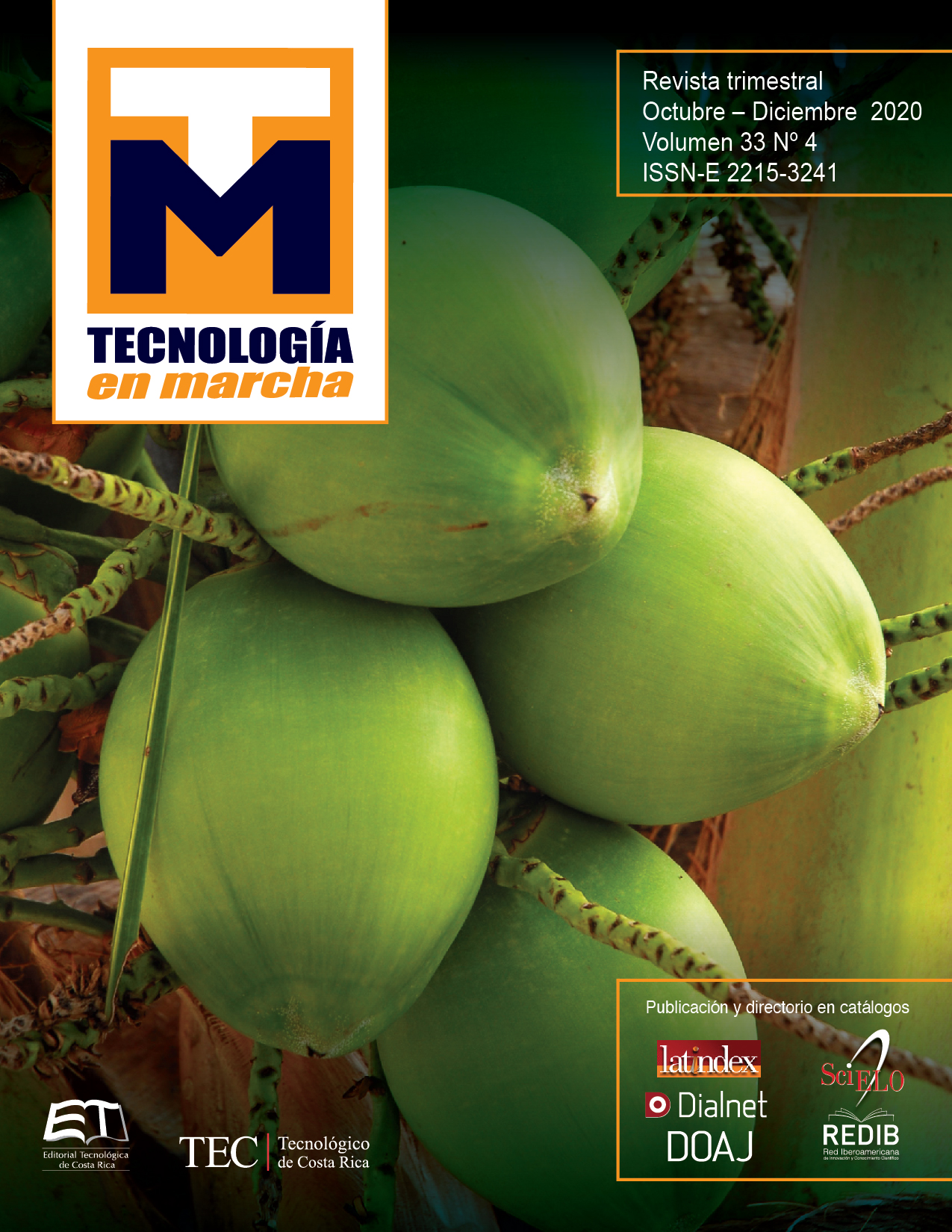Critical parameters determination and data exploratory analysis of rum aging process
Main Article Content
Abstract
Volume losses, known as wastage are presented during the rum aging process. As part of the continuous validation of the process Pareto Analysis is applied to determine the critical parameters that affect it. They are: aging time, volume, dioxygen concentration; temperature and humidity. The proper functioning of the process is influenced, among other factors, by the operation variables, which are recorded in databases. In this work, the databases were used to carry out a principal component analysis (PCA). The behavior of the main variables that affect the aging was understood, applying PCA, using the software The Unscrambler v10.4. With the ACP, the more important variables of the process were defined. The dimensionality was reduced to three main components that explain 89, 11 % of the total variance of the data, including the five variables. Wastages during 13 months were calculated (763.43 L). This value represents 10.5 % of the initial volume, higher than the 6 % recommended by the Dominican Republic Regulation, considered as a reference in this research. This wastage represents losses equivalent to $32 718. Losses that correspond to the 6 % of the initial volume were calculated ($18 631). If the process fulfils the Dominican regulation, $14 087 could be saved.
Article Details

This work is licensed under a Creative Commons Attribution-NonCommercial-NoDerivatives 4.0 International License.
Los autores conservan los derechos de autor y ceden a la revista el derecho de la primera publicación y pueda editarlo, reproducirlo, distribuirlo, exhibirlo y comunicarlo en el país y en el extranjero mediante medios impresos y electrónicos. Asimismo, asumen el compromiso sobre cualquier litigio o reclamación relacionada con derechos de propiedad intelectual, exonerando de responsabilidad a la Editorial Tecnológica de Costa Rica. Además, se establece que los autores pueden realizar otros acuerdos contractuales independientes y adicionales para la distribución no exclusiva de la versión del artículo publicado en esta revista (p. ej., incluirlo en un repositorio institucional o publicarlo en un libro) siempre que indiquen claramente que el trabajo se publicó por primera vez en esta revista.
References
Canter, K. (2006). Utilizing RM in a Submission for Developing Critical Process Parameters and Critical to Quality Attributes. FDA/Industry Statistics Workshop. Sep.
Desiree, G. (2018) Conoce las etapas de validación de procesos. Disponible en:http://www.qbd.lat. Fecha 14-11-2018. Consultado:8-9-2019.
DGII. (2012). Norma general sobre el manejo del alcohol en las licorerías. No. 03-2012. Dirección General de Impuestos Internos, República Dominicana. 3 pp. Disponible en: https://www.dgii.gov.do/legislacion/normas/Documents/03-2012.pdf
González, M.D., Vázquez, M.A., Redondo, D.(2006). Estudio comparativo de rones y aguardientes añejados en barriles de roble y por el proceso acelerado. ICIDCA, XL(3), 12-19.
ICIDCA. (2017). Control de producción y trazabilidad. Procedimiento interno para bebidas. Instituto Cubano de Investigaciones de los Derivados de la Caña de Azúcar, La Habana.
López, L. E., Zumalacárregui, L., Pérez, O. (2019). Análisis de componentes principales aplicado a la fermentación alcohólica. Revista Científica de la UCSA, 6 (2), 11-19
Marcano, J. (2019) En ron. Tradición en Las Antillas. Disponible en: http://www.mipais.jmarcano.com. Consultado: 15-9-2019.
Mesa, L., Gozá, O., Uranga, M., Toledo, A., Gálvez, Y. (2018) Aplicación del análisis de componentes principales en el proceso de fermentación de un anticuerpo monoclonal. Vaccimonitor, 27(1), 8-15.
Pérez, J., & Delgado, R. (2007). Bebidas alcohólicas destiladas y añejadas. CD-ROM. Instituto de Investigaciones para la Industria Alimenticia, La Habana.

